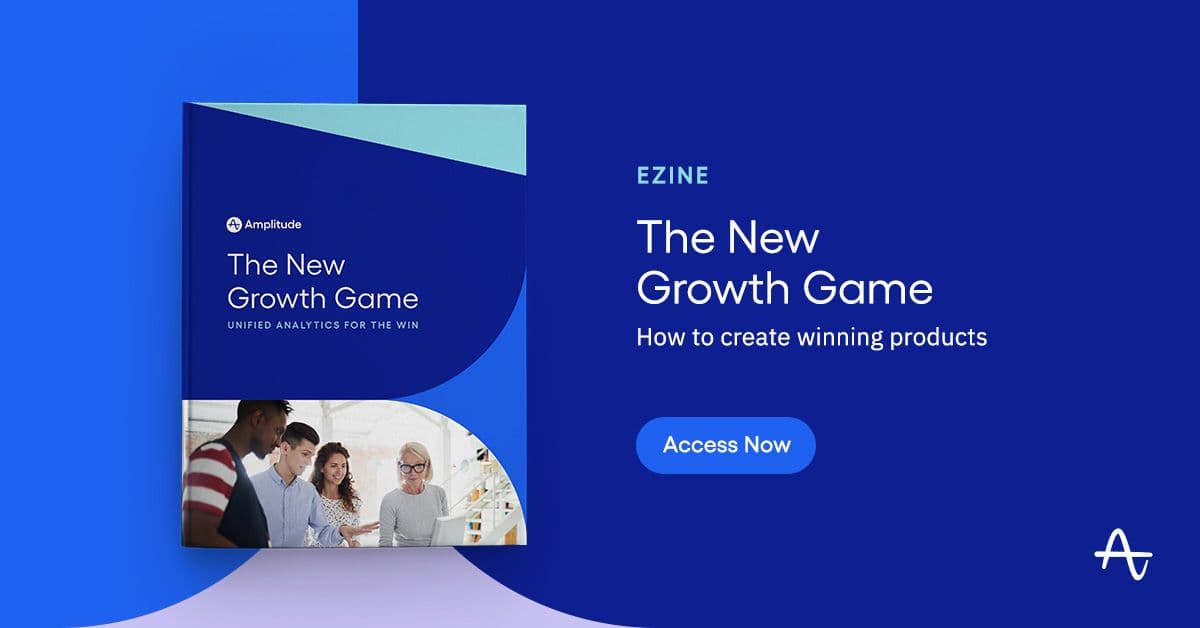How a Thriving Product Team Uses Data to Improve Retention, Prioritize Projects, and Engage Community
A fast-growing property search engine learns to leverage the power of data, boosting retention and engagement in the process.
One of my main jobs as a product manager is prioritization, which often means telling people “no, not now.” Tackling every new feature or design change at once is impossible, but justifying “nos” with data will lend credibility to those decisions.
Since April 2021, I’ve been the Senior Product Manager for Showcase IDX, the leading IDX WordPress plugin for real estate that allows realtors to display local MLS listings directly on their websites. eXp World Holdings acquired Showcase IDX back in 2020 to use the IDX technology to improve the search experience for their global online brokerage eXp Realty.
The engineering and product teams continually work to refine our user’s overall search experience—from property searches, evaluating options, and requesting more information—and help them ultimately find a home they love.
Data sits at the heart of this activity. In my work as a product manager, I heavily lean on my background in data warehousing and analytics. I handled large-scale data at incredible companies like Verizon, Comcast, AT&T, and Rogers, which gave me a unique perspective on data use within massive, complex organizations. At Showcase IDX, I knew we had to use data to solve a looming problem – retention – and establishing the right tools and data culture was crucial.
The limitations of Google Analytics and SQL
A key goal of Showcase IDX is to drive growth in web traffic for eXp Realty. To do that, we needed to increase our consumer retention rates. Unfortunately, we couldn’t determine the best ways to change our product to boost retention.
We primarily used Google Analytics for front-end journey tracking, and SQL queries to query our backend databases, and both options had limitations. At the time, Google Analytics only allowed us to see high-level metrics such as page views, and SQL queries were complex for a non-technical user trying to gain insights. We also couldn’t track user actions in real time or follow them through the entire customer journey. What steps did users take after initiating a search? Which users dropped off the funnel after that? We couldn’t drill deeper into behavioral relationships to determine which features mattered the most, leaving us with massive blind spots.
When product teams don’t have a way of surfacing insights, it’s hard to identify a path forward.
We didn’t have a way of surfacing the information we needed, and without that, we would only be guessing at what to try next, and what was working.
A clear choice for greater functionality
Showcase IDX needed a product analytics platform that could support our experimental approach with timely and accurate insights. Beyond that, we knew sharing capabilities would be critical for partnering with key stakeholders and improving confidence in our forecasts. Not only would this build trust in our product development process, but it would direct better investment decisions and prioritize the right projects moving forward.
We considered investing more in our existing tools, but since this was critical to our strategic growth plan, we decided to evaluate other options on the market. Our core objectives were simple: to track accurate MAU data based on a specific product usage definition, measure user retention, track conversion to key events, and determine which product features were most likely to influence improving retention and conversion.
During our search, I couldn’t get Amplitude out of my mind. I had wanted to try Amplitude while in previous roles, but there were always barriers to adoption. When I got the opportunity to build an enterprise-ready analytics platform from scratch, Amplitude was at the top of my list.
After contemplating what we needed from a product, executive, and engineering perspective, it became clear that Amplitude would be our best option. We knew Amplitude would work well within our tech stack and grant us the functionality we’d been dreaming of.
Establishing a consistent path to adoption
I was fortunate to have executive-level support, and we created a small, tight-knit team to work on implementation—essential for something brand new. I worked closely with an engineer and the implementation expert from Amplitude to develop a prioritized project roadmap. We were up and running in less than a month. Then, I turned to our workforce.
From the start, data became a part of our daily lives through curated Amplitude Analytics dashboards. I presented these dashboards during our all-hands and strategy meetings and established a set of parameters we would examine to track trends. It was super helpful to use dashboards and reports to show people how tracking leads to trends and how that affects forecasting. We got used to asking questions as a group and exploring data accordingly to answer these questions, increasing transparency within our organization.
We used the same four or five chart types for the first several months, and as we grew and gained a little more bandwidth, people became confident enough to explore and experiment independently. Through repeated insight discovery and data-based decision making, other product teams also adopted Analytics in their day-to-day operations. There was a snowball effect; once one team began to see the value, another team picked up the ball and ran with it—and we all began to notice some exciting changes.
Challenging assumptions with data
Our mission as a company is to create meaningful connections between consumers and agents. To support that mission, we offer consumers the option to ask questions, request tours, save a search, or save a specific listing. We initially theorized that consumers would begin to build a connection by saving searches so they could return to them repeatedly.
We were wrong. Once we deployed Analytics, we realized that customers were more likely to save a search, much later in their journey. We discovered other features that were more correlated with improved retention and likelihood of connecting with an agent. With that insight, we returned to the drawing board and started focusing on other points in the customer journey prioritizing deeper engagement prior to focusing on retention.
Using Analytics also changed how we approached our audience. Our product has always had a dual user base (agents and consumers), and we tried to account for this accordingly when making product decisions. Our sister company eXp Realty launched in 2009 as the first cloud-based real estate brokerage. eXp World Holdings CEO Glenn Sanford grew that from dozens of agents to now over 85,000 agents globally—and saw a corresponding jump in agents utilizing and requesting new cloud-based tools to grow their businesses.
The company wanted to expand the Agent Experience product line to bring agents into our consumer ecosystem and help them (and consumers) find other agents for assistance, referrals or mentorship. But we were blind to the actual product usage throughout the agent community until we dug into the data in Analytics and realized that usage among real estate agents was 2–3X higher than we first thought. We learned that one of the biggest things agents valued was having a community and connecting with other agents.
With that knowledge in mind, our team is hard at work developing, refining, and rolling out tools for our incredible agent community. We’re investing in priority projects that make their lives easier and bring them closer to consumers.
Measuring the results of data-driven changes
Analytics doesn’t just help us measure the results of our changes. It helps us spot problems with our choices, too. Our prior UI had a search bar, filter buttons, and a “save search” button in a row. We changed the color of that button and moved it to a different place as part of a UI redesign, and we noticed a massive drop in the number of users saving searches. We were at a loss. What happened during the launch?
In Analytics, we discovered that not everyone who previously clicked “save search” wanted to save the search. Users typed something in the search bar and then hit the “save search” button, thinking they were just performing a search, not saving it. Moving the button solved that problem. Still, we saw that people who wanted to save a search were having a hard time doing that because they couldn’t find the button anymore. We changed the color to something more visible and saved searches returned to previous levels. In fact, conversions more than doubled, because now, it’s mostly people with a high intention of clicking that button that will follow through and finish that action.
As we gained more insights, we also started to adapt our design philosophies. As evidenced by our Analytics, mobile dominates our usage and continues to grow. Whenever we have a new product or a feature, we approach everything as a mobile-first design. We want to know the first thing a first-time user does. From there, we consider quick, reasonable actions to get them through the funnel without getting bogged down in a multi-step, high-pressure experience that requires them to enter a lot of information.
We used the insights from Analytics to redesign our UI and saw a 20-25% improvement in retention.
We used the insights from Analytics to redesign our UI, then tracked how our retention rates changed. We saw a 20-25% improvement in retention, and when you scale that in terms of hundreds and thousands or millions of users, we start to see the benefits of improving retention when developing a product-led growth flywheel.
Analytics enables our whole team to solve problems, discover new ones, and solve those too—all using data that adjusts to our needs.
Prioritizing today for a prioritized future
I don’t have to push as hard to drive data these days. It’s both heartwarming and humbling to step back and see people continue to come to the table with their own analysis. Data has become a big part of conversations and decision-making at Showcase IDX, and analytics play a huge role in our product development process. Analytics enables our whole team to solve problems, discover new ones, and solve those too—all using data that adjusts to our needs.
The data we surface from Analytics allows us to focus our efforts and improve our product while contributing to the growth of eXp Realty. We have the confidence to test smaller experiments, and ideate within more exciting, nascent spaces such as Machine Learning.
It’s not easy to build a data-driven culture, but when it happens, life as a product manager gets a lot easier. I can confidently say “no” to lower-priority ideas and “yes” to projects that will stay true to our culture of “Outcomes over Activity”.

Spondon Kath Hazarika
Senior Product Manager, Showcase IDX
Spondon Hazarika is a Senior Product Manager at Showcase IDX. Over the past decade, he has worked on product ideation, product development, evangelization, data analytics, testing, project management, and operational execution.
More from Spondon





